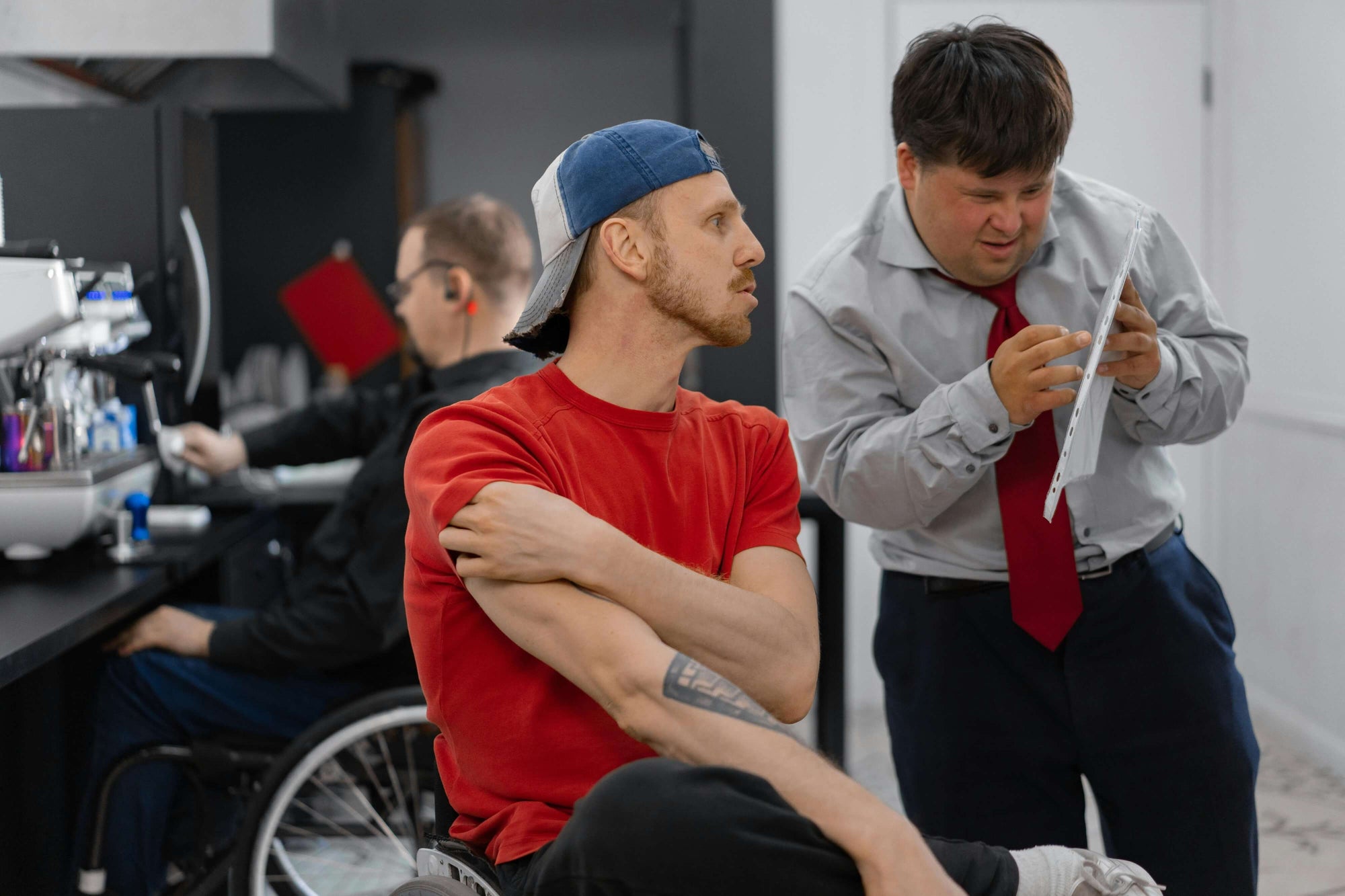

· By Jennifer McGee
The Importance of Language: How to Speak About Disabilities
Language shapes how we see the world, and when it comes to discussing disabilities, the words we choose matter immensely. The way we talk about disabilities can either promote inclusion and respect or unintentionally reinforce harmful stereotypes. It’s important to use thoughtful, inclusive language that reflects the dignity and humanity of individuals with disabilities.
In this blog, we will explore how to speak about disabilities respectfully, highlighting the importance of person-first language, and offering tips to help you avoid hurtful terms.
What is Person-First Language?
Person-first language is an approach that emphasizes the individual before their disability. For example, instead of saying "a disabled person," you would say "a person with a disability." This simple shift in phrasing puts the person at the forefront, acknowledging that they are more than their disability. It’s a powerful way to remind others that individuals with disabilities are, first and foremost, people with unique qualities, talents, and experiences.
Here are a few examples of person-first language:
- Instead of saying "an autistic child," say "a child with autism."
- Instead of saying "the blind woman," say "a woman who is blind."
- Instead of saying "wheelchair-bound," say "a person who uses a wheelchair."
By focusing on the person, we foster respect and avoid reducing someone to their condition.
Why Inclusive Language Matters
Using inclusive language shows empathy and understanding. It helps combat stereotypes, challenges misconceptions, and encourages positive attitudes toward people with disabilities. Language is a powerful tool in shaping how society views disability, and when we speak thoughtfully, we contribute to creating an inclusive and respectful culture.
Here are a few reasons why inclusive language is important:
- Promotes Dignity: Words can either affirm someone’s self-worth or diminish it. Using respectful language ensures that individuals with disabilities feel valued.
- Encourages Understanding: Inclusive language fosters better communication. It shows that you care about understanding others' experiences without making assumptions based on their disability.
- Breaks Down Barriers: By being mindful of how we speak, we help break down societal barriers and create a more inclusive environment where people with disabilities can thrive.
Avoiding Hurtful Terms
Some words and phrases are outdated or have negative connotations. These terms can be hurtful and perpetuate harmful stereotypes about people with disabilities. To ensure your language is respectful and inclusive, avoid using terms like:
- "Handicapped": Instead, use "person with a disability" or "person with physical disabilities."
- "Suffers from" or "afflicted with": These phrases imply pain or negativity. Instead, use "has" or "lives with" when describing someone's disability.
- "Crazy" or "insane": These terms are often used casually but can be harmful. When discussing mental health, it’s best to use respectful language like "person with a mental health condition."
Disability Language in Everyday Conversations
In everyday conversations, it’s important to be mindful of how we refer to disabilities. For instance, if you are unsure how someone identifies or prefers to be described, don’t be afraid to ask. It’s always better to seek clarification than to make assumptions. Respecting the preferences of individuals with disabilities shows a commitment to fostering understanding and inclusion.
At Inclusive Art House, we’re passionate about using language that uplifts and supports individuals with disabilities. Through our art and literature, such as "Izzy Can’t Talk", we highlight the importance of embracing different communication styles and abilities. By making conscious language choices, we can help create a more compassionate world where everyone’s voice is heard and valued.
Embracing Person-First Language in Your Life
Implementing person-first language and avoiding outdated, harmful terms isn’t difficult, but it does require mindfulness. Here are a few tips to help you incorporate inclusive language into your everyday life:
- Think before you speak: Consider the impact of your words before you say them. Ask yourself if the language you’re using reflects respect for the individual.
- Stay informed: Language evolves over time. Stay informed about the preferred terms and phrases within the disability community to ensure you’re using up-to-date and respectful language.
- Model respectful language: Lead by example. When you use inclusive language, you show others the importance of respect and empathy in discussions about disabilities.
Conclusion
The words we use matter. When speaking about disabilities, using person-first, inclusive language helps to foster respect, promote understanding, and break down societal barriers. By learning how to communicate in a thoughtful and inclusive way, we can create a world where people with disabilities are seen for who they are—individuals with unique strengths, experiences, and talents.
At Inclusive Art House, we strive to promote the values of inclusion and empathy through our art and literature, such as the empowering book "Izzy Can’t Talk." Join us in embracing language that respects and uplifts all individuals, regardless of ability.
